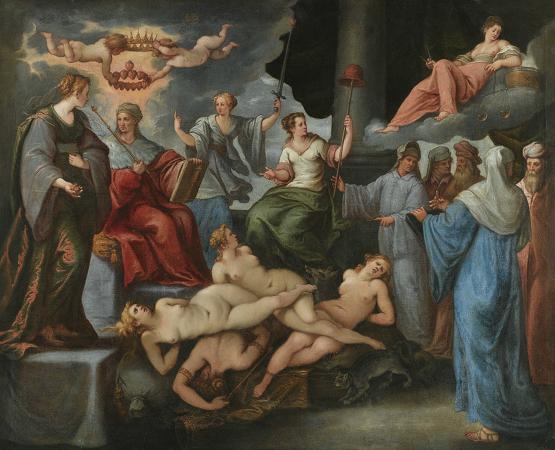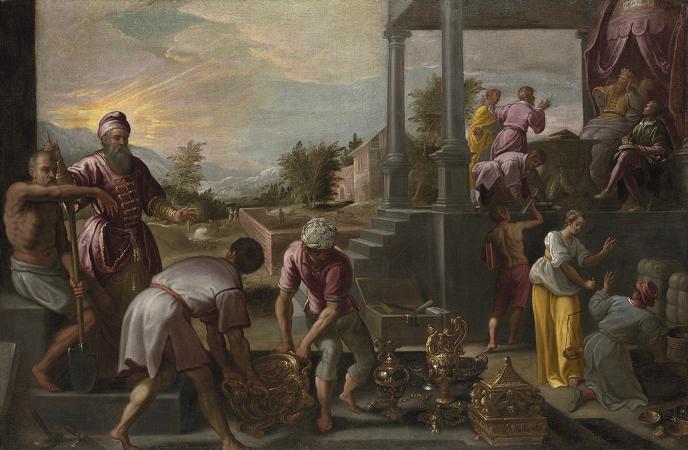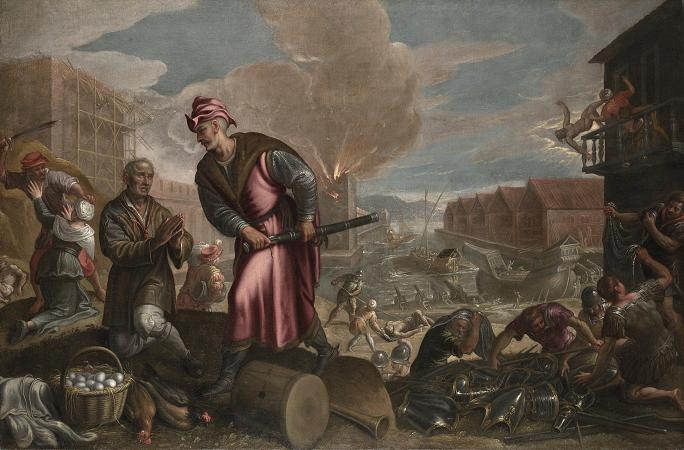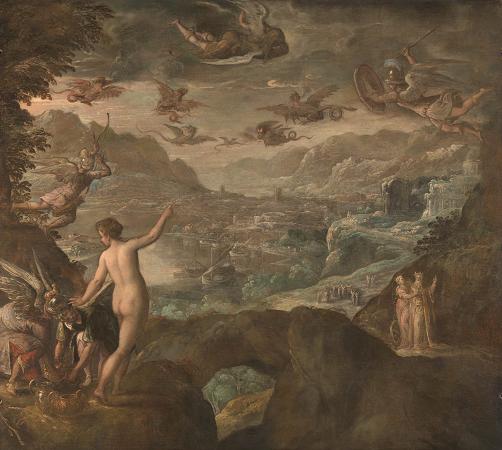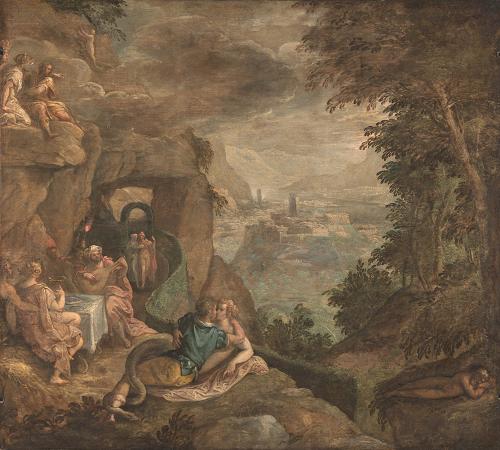Paolo Fiammingo (c1540 - 1596). Pauwels Franck known in Italy as Paolo Fiammingo and Paolo Franceschi, was a Flemish painter, mainly of landscapes with mythological, allegorical and religious scenes, who was active in Venice for most of his life. No concrete details about Pauwels Franck's early life and training have been preserved. He was likely born c. 1540. His birthplace is not known. He became a member of the Antwerp Guild of Saint Luke in 1561. The exact dates and details of his travel to Italy are not known. He is believed to have passed through Florence where he had contact with artists working in the Studiolo of Francesco I de' Medici, Grand Duke of Tuscany. He is recorded in Venice from 1573 but was likely an assistant in Tintoretto's workshop there already in the 1560s. In Venice he is believed to have been in contact with his fellow countryman Lodewijk Toeput, who was also working in Tintoretto's workshop. The two artists may have met in Tintoretto's workshop. From 1584 to his death the artist was registered at the painter's guild of Venice. In Italy the artist became known by the name Paolo Fiammingo. He resided and worked in Venice for the rest of his career. He opened a successful studio in Venice, which received commissions from all over Europe. He worked for international patrons including Hans Fugger, the heir of a German banking dynasty. Fugger commissioned him in 1580 to produce several series of paintings to decorate Castle Kirchheim in Wurttemberg near Augsburg, the Fugger family's summer residence. While Paolo Fiammingo produced a large number of work in the 1580s for the Fugger commissions, he appears to have produced at the same time several versions of many of the compositions made for the Fugger family. This suggests that Paolo ran a workshop of some size at the time. The artist painted landscapes with religious scenes but is mainly known for his allegorical and mythological scenes. The latter were inspired by Giorgione but were treated by Franck with a Venetian softness and grace and set in dreamlike landscapes. These landscapes anticipate the Italianate Flemish school later associated with Paul Bril and Jan Brueghel the Elder. A good example is the Landscape with the Expulsion of the Harpies. The Fugger family gave various commissions to Paolo Fiammingo for the decoration of their new Castle Kirchheim in Wurttemberg. It is believed that he painted a total of d 37 canvases for the Fuggers. In 2007, 18 of these works were still in possession of the family, 8 in the Bayerische Staatsgemaldesammlungen, Munich, and one painting was in a private collection. Most of these paintings remained united for a long time although some dispersal started to happen from the 17th century. They were photographed at the end of the 19th century. The photos are an important source for understanding the work of Franck. Some of the works formerly in the Fugger collection have appeared recently at auctions. One Fugger commission on which he worked between 1580 and 1592 was a series of twelve works depicting The Four Ages of Man. The iconography of this series was derived from Ovid's Metamorphoses, which recounts how the earthly paradise of the Golden Age descends through the Silver Age and Bronze Age into the strife and greed of the war-like Iron Age. Another series made for the Fuggers was a set of the Planets in which the seven planets were represented. The series was completed by a composition of the Triumph of the Virtues over the Vices. In the foreground there are four naked, partly tied female figures lying on sacks and chests, accompanied by a fierce looking dog and cat. This group of vices is surrounded by the personifications of four virtues and five philosophers or holy men. Another female figure with bare breasts resting on a cloud is watching a pot from which smoke is emerging. She is also holding a pair of compasses and a balance. The composition depicts the Triumph of the Virtues over the Vices as a trial of traitors. A series of allegories of the Four Elements made for the Fuggers are lost but other series and copies of these allegories are still in existence. A full set was sold at Sotheby's on 5 December 2007 lot 17, Another allegorical theme treated by the artist is that of the four seasons. A set is in the collection of the Prado and as is usual with these works, they illustrate the four seasons by depicting the human activities linked to each season. His masterpieces include the four Allegories of Love, including the Amore letheo, the Punishment of Love, Reciprocated Love and Love in the Golden Age. These last two works became rapidly known through prints made by Agostino Carracci. It is possible hat Carracci's reproduction of Love in the Golden Age was the inspiration for Matisse's Le bonheur de vivre.
more...
